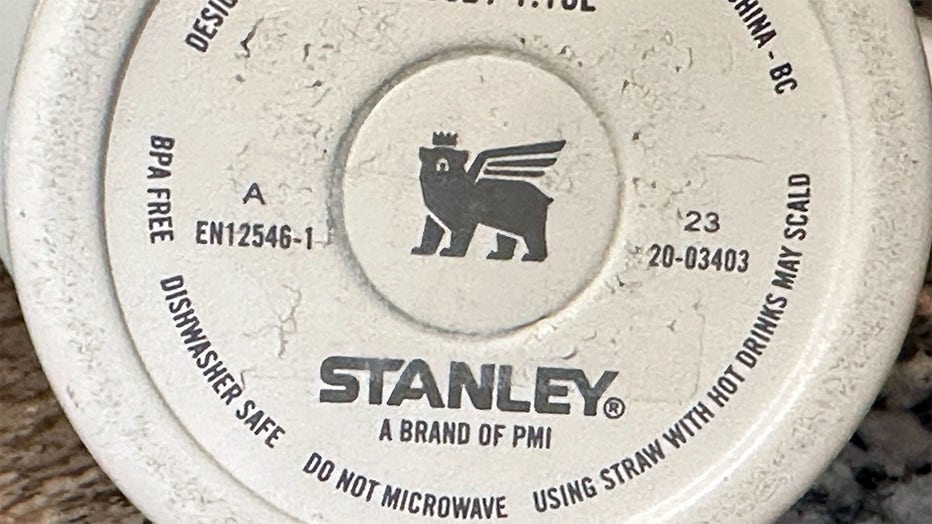Do Stanley cups pose a lead poisoning risk? Here's what to know about online claims

Stanley products contain 'some lead,' company says
Stanley tumblers have become popular in recent months, but people have begun asking whether they are safe to use. Stanley says the products contain a sealing material that uses "some lead." Dr. Peter Chin Hong joins LiveNOW's Carel Lajara.
As demand for Stanley tumblers has surged in recent months, consumers have started posting about lead concerns on social media. So much so, that the company even responded to offer some clarity.
The Stanley products, insulated steel beverage containers sold in various colors like pink, green, blue, and white, contain a sealing material that uses "some lead," the Stanley PMI website states. But it adds that no lead touches any surface of any Stanley product and the chemical does not come into contact with any beverage placed inside.
RELATED: Stanley cups 411: Why are they so popular? The rise of the viral tumbler
In a separate statement to FOX Business, the company reiterated this and shared a bit more about the product technology.
"At Stanley, one of the key features of our products is our vacuum insulation technology, which provides consumers with drinkware that keeps beverages at the ideal temperature," the company told FOX Business. "Our manufacturing process currently employs the use of an industry standard pellet to seal the vacuum insulation at the base of our products; the sealing material includes some lead."
It added: "Once sealed, this area is covered with a durable stainless steel layer, making it inaccessible to consumers."
Meanwhile, several Stanley-drinkers have posted on TikTok about the question of lead in their tumblers, leading to more confusion for consumers.
If you drink from a Stanley, here’s what to know about the cup and any possible risk of lead exposure.
What is lead poisoning, and who’s most at risk?

Lead poisoning: Common sources, associated health problems and treatment
Lead is toxic to everyone but young children are especially at risk, according to the CDC.
Lead poisoning is caused by exposure to high levels of lead. Children under the age of 6 are most at risk for health problems caused by lead exposure because their bodies are still developing, and they are growing so rapidly, according to the U.S. Centers for Disease Control and Prevention.
Young children also tend to put their hands or other objects – which may be contaminated with lead dust – into their mouths, the CDC adds.
Kids are typically exposed to lead through bits of old paint, contaminated dust, and in some cities, drinking water that passes through lead pipes. The metal accumulates in the body, and at very high levels it can damage organs and cause seizures.
Treatment includes finding and removing the source of the lead to prevent further exposure, according to the Cleveland Clinic.
Social media videos circulate about Stanley cups and lead

Wear and tear on a Stanley cup (FOX / file)
Videos on platforms like TikTok and Instagram in recent months have circulated that suggest Stanley cups contain lead.
Tamara Rubin, owner of Lead Safe Mama, a consumer advocacy group, shared a post in March 2023 that showed a positive result with a test on a 40-ounce Stanley cup.
Others started conducting their own tests on Stanley cups and sharing the results on TikTok or elsewhere.
What would cause lead exposure in a Stanley tumbler?
To cause some type of lead exposure, the Stanley tumbler would need to be damaged, used in a way that is not intended, or become exposed to extreme heat to expose the lead, the company explained.
"Our engineering and supply chain teams are making progress on innovative, alternative materials for use in the sealing process," a company spokesperson told Today.com.
RELATED: 1 person spent $3K on Stanley cups: Here are other ways to spend that kind of cash
Stanley PMI noted how all of its products "meet all US regulatory requirements," including California’s Proposition 65, which requires businesses to notify consumers of certain heavy metals and chemicals.
"PMI tests for and validates compliance on all products through FDA accredited 3rd party labs that verify our products follow strict guidelines including but not limited to BPA/BPS, PFOS, and phthalate regulatory requirements," it continued.
Stanley recommends consumers regularly clean their cups, formally called "Quenchers" or tumblers.
"All Quenchers are dishwasher safe," the company states on its FAQ page. "To preserve the mirror-like finish for years to come, transport or pack your Quencher with care."

What's behind the Stanley cup craze?
Marketwatch reporter Charles Passy joined LiveNOW's Lexie Petrovic to discuss the popularity of the Stanley cup.
Do other beverage tumblers contain lead?
In its statement, Stanley noted how its manufacturing process currently uses the "industry standard" pellet to seal the vacuum insulation at the base of its products, and that the sealing material includes some lead."
Rubin with Lead Safe Mama has tested several bottles made by other companies with a similar makeup and claims to have found other unsafe levels of lead used as a sealing dot in the bottoms of some insulated stainless steel and aluminum water bottles.
The U.S. Consumer Product Safety Commission monitors products for potential safety violations with lead levels. The agency has announced recalls for several items that were found to exceed the federal lead content ban, including a stainless steel toddler cup made by PandaEar, a Cupkin double-walled stainless steel children’s cup, LAOION children’s cups, and Tiblue 8-ounce and 12-ounce children’s cups.
Consumers can report any lead-related concerns they have about a product to the CPSC at SaferProducts.Gov.
This story was reported from Cincinnati. FOX Business contributed.

